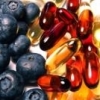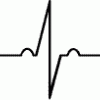i'm going to take time to answer the sweeping statements with no references (except himself and he is an authority) in the preceding post from Michael, our resident SENS and CRAN expert.
This isn't actually how this works. The composition of lipid droplets doesn't simply reflect dietary intake; and saturated and unsaturated fats both promote lipophagy.
Take away: LD's form from unsaturated fatty acids
LD biogenesis is stimulated upon an increase in intracellular free FA levels.
Uptake of individual fatty acids into adipose tissue in relation to their presence in the diet
Shows that adipose cells store dietary fats in the preferential order: monounsaturated, n-6 polyunsaturated, saturated. So with what most people eat, the FA's stored and then released by adipose cells are mostly not saturated and will stimulate LD biogenesis--directly related to a diet high in unsaturated fats.
Take away: Dietary unsaturated fats increase LD's
The single large "LD" in an adipose cell is in a constant state of simultaneously storing and removing (via lipolysis) fatty acids and glycerol molecules from the LD. There is no lipophagy there. The adipose LD is much too large. On the other hand, non-adipose cells make relatively small LD's. They appear to change size through fission and fusion much like mitochondria, and the smaller ones are easily degraded.
Lipid Droplets in Health and Disease
overall lipid content that recycled via autophagy, contributed to the growth of LD's.
Take away: LD's grow in size during earlier phases of autophagy.
Recent investigations defined another selective form of macroautophagy termed “lipophagy.”
Pharmacological or genetic inhibiton [sic] of lipophagy resulted in elevated TAG concentrations, increasing concomitantly LD numbers and size.
Take away: Without lipophagy LD's continue to grow in size and number. (in spite of "lipolysis" mentioned below)
Lipid Droplets in Health and Disease
Accumulation of LDs in tissues in high amounts may cause chronic inflammation which is identified as one of the hallmarks of obesity-related metabolic disorders.
Take away: Accumulation of LD's will eventually cause disease
Degradation of lipid droplet-associated proteins by chaperone-mediated autophagy facilitates lipolysis
Chaperone-mediated autophagy (CMA) selectively degrades a subset of cytosolic proteins in lysosomes. A potent physiological activator of CMA is nutrient deprivation, a condition in which intracellular triglyceride stores or lipid droplets (LD) also undergo hydrolysis (lipolysis) This shows that autophagy puts adipose triglyceride lipase (ATGL) onto the surface of LD's and requires an active LC3 autophagy gene.
ATGL promotes autophagy/lipophagy via SIRT1 to control hepatic lipid droplet catabolism This shows that SIRT1 is required together with ATGL on the LD's for lipophagy to occur.
Take away: Autophagy is a prerequisite for lipophagy.
The LD lipolysis from nutrient-deprivation that is mentioned doesn't seem to prevent LD accumulation when autophagy is inhibited.
ATGL promotes autophagy/lipophagy via SIRT1 to control hepatic lipid droplet catabolism
The role of autophagy in LD metabolism was unclear until Singh et al. showed that inhibiting autophagy in the liver promoted LD accumulation and attenuated oxidation of the hydrolyzed FAs.
Take away: Again LD's accumulate without the autophagy
In conclusion
- LD's contain mostly unsaturated fats that were at some point consumed
- When LD's are not removed, they grow in number and size and result in disease.
- LD removal must be preceded by autophagy
- In the early stages of autophagy LD's grow in size, so it likely takes awhile before lipophagy kicks in
- It appears to be lipophagy, not LP lipolysis, that is enabled by autophagy
Edited by RWhigham, 11 September 2017 - 12:37 AM.























































